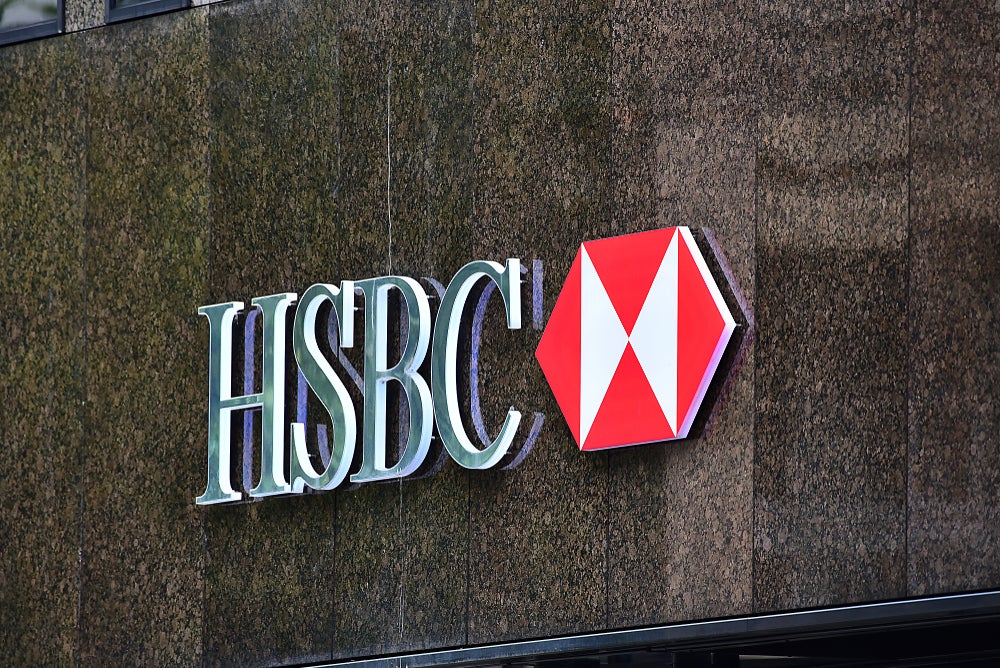Australia is enjoying its 23rd consecutive year of economic growth, flourishing as a wealthy country, mainly thanks to its vibrant property market and healthy savings culture. With the family office sector developing rapidly, Valentina Romeo talks to domestic players to understand how private banks are shaping their business models for the wealthy
The private banking industry in Australia has benefited from 23 years of sustained economic growth to become the third-largest private wealth market in Asia-Pacific, and the 11th-largest in the world.
Australia’s wealth per adult in 2014 was $430,800, the second-highest in the world after Switzerland, according to Credit Suisse’s fifth wealth report.
The Credit Suisse research also found that the proportion of those Australians with wealth above $100,000 was the highest for any country – eight times the world average.
With 1,783,000 people among the top 1% of global wealth holders, Australia accounts for 3.8% of this wealthy group, despite having just 0.4% of the world’s adult population, the report also points out.
"The private banking market in Australia is incredibly fast-growing," Mike Norfolk, head of ANZ Private Banking in Australia tells PBI.
"Australian HNW households hold about $1.6trn in investable assets and we’ve seen that growing from the last year to the tune of about $200bn, that is an exceptional 14% growth when compared to the wider European market," he says.
How well do you really know your competitors?
Access the most comprehensive Company Profiles on the market, powered by GlobalData. Save hours of research. Gain competitive edge.

Thank you!
Your download email will arrive shortly
Not ready to buy yet? Download a free sample
We are confident about the unique quality of our Company Profiles. However, we want you to make the most beneficial decision for your business, so we offer a free sample that you can download by submitting the below form
By GlobalDataAccording to PBI’s sister company WealthInsight, the number of Australian HNWIs is forecast to grow by a significant 12.8% to reach 349,154 by 2018.
Former head of private banking at RBS’s Coutts in London, Norfolk says one of the reasons for this growing wealth can be attributed to the huge savings activity existent in the aging Australian population.
He adds that people are also "relocating back to this part of the world" in professional roles, and "I am one such example".

"Australian HNW households hold about $1.6trn in investable assets and we’ve seen that growing from the last year to the tune of about $200bn, that is an exceptional 14% growth when compared to the wider European market," says Mike Norfolk, head of ANZ Private Banking in Australia.
Adapting and segmenting
The private banking client base in Australia is made of essentially three different client areas: families inheriting wealth, professionals with $1-3m income a year, and entrepreneurs – particularly those making their wealth in the tech sector.
After the financial crisis, Jason Murray, general manager of NAB private wealth, has seen many of NAB’s clients become globally-mobile, with interests in multi-shored businesses or investments.
He also says the family office (FO) market, although not critically big yet, is "quite well developed" in Australia.
We have had some FO relationships for over 50 years across multiple generations," Murray says. NAB, Australia’s largest private bank, has 18,000 private clients in Australia, ranging from affluent investors to UHNWs and representing a 40% market share.
The key trend in the family office space (FO) in Australia is succession planning and structuring, Norfolk explains.
These families look at cash management, have more appetite for investing and increasingly ask for professional advisory services.
"One of the other areas, in tandem with our investment bank, is also personal private banking support to the very large families, who also have intermediated FO capabilities," Norfolk adds.
The big four banks in Australia (NAB, ANZ, Westpac, Commonwealth Bank) are relatively recent entrants to private banking.
However, they are now extending their services into funds management, wealth and investment management and insurance areas.Responding to this change in clients’ needs, ANZ is building new capabilities from an advisory standpoint, focusing on discretionary management or execution functionalities and self-directed options.
As wealth increases, ANZ is addressing needs of the HNW and UHNW market, similar to many global players, "simply because the volume of clients we have requires us to increase our services," says Norfolk.
Currently, with 60% Australian and 40% international clients, ANZ’s private banking unit manages upwards of $25bn asset under management (AuM) globally, including lending and investable assets.

Bricks and mortar: super wealth generator
Similar to the UK, Australian HNWIs have experienced a substantial growth in property value – both commercial as well as residential, which has further boosted wealth creation in the country.
Credit Suisse reports that the average Australian household had $319,700 of equity in their homes, representing approximately 60% of each person’s wealth.
"Property appreciation over the last 40-50 years has been strong," says Murray.
"We have a number of families and clients who have simply built property portfolios over time and those have performed extremely well," he adds.
However, the Australian market is not just growing organically, ANZ’s Norfolk says. It is also benefiting from an injection of HNWs coming in from Asia. The property market is ultimately one of the primary targets for these investors.
Thanks to the Significant Investor Visa scheme, which allows foreign investors to obtain a visa if they invest a minimum of $5m in the country, Australia is amidst a consistent influx of Chinese HNWs in its territory.
In 2012, Chinese buyers spent more than A$4bn ($3.2bn) in Australia, according to the Foreign Investment Review Board.
"NAB Private Wealth has specifically sourced a bespoke package of compliant funds to meet the needs of investors and their families hoping to participate in the Australian government’s program," adds Christine Yates executive general manager at the bank.
On the other hand, ANZ has also strategically invested heavily in Asian countries such as Taiwan, China, Hong Kong and Indonesia to attract young HNWIs.
An oligarchical market
In Australia, property development, including apartment development, industrial properties, and shopping centres, is a prolific industry that looks set to continue outperforming, observes Murray.
In the last five years, the number of HNWIs who acquired their wealth through real estate, retail, fashion and luxury goods, and hotels, restaurants and leisure increased by 72.1%, 69.7% and 68.3% respectively, WealthInsight reports.
However, "everything else" in Australia is almost an "existing oligarchical market", Murray adds.
With the ‘big four’ banks, two to three large telecom companies and a couple of airlines, Australia doesn’t allow much space for other competitors in these segments.
"It is difficult to start business in most of the largest sectors because they already have two or three dominant players," he says.
That consequentially means that entrepreneurs tend to generate wealth in niche markets.
In 2013-2014, the finance and insurance industry contributed almost $130bn to Australian economy – 9% of the GDP, according to the Australian Bureau of Statistics (ABS).
This industry is the second-largest in the Australian economy after mining, and a major contributor to employment.
Though historically prolific for the Aussie investor and the economy on the whole, Murray says the mining sector will not generate much new wealth in the future.
On the other hand, the mandated pension or superannuation market in Australia is set to be a big wealth generator.
The Australian pension market is one of the largest in the world ($1trn), currently ranking fourth behind the US, UK and Japan, Murray says.
"Quite a few of our wealthy clients actually have their wealth contained within the pension fund, because the pension industry is so vibrant in this country that it represents a large amount of AuM," he says.
According to WealthInsight’s data, the number of HNWIs acquiring their wealth through the financial services and investments industry increased by 78.5% between 2009 and 2013.
Unlike the past, the Australian government is currently developing more free trade agreements, thus opportunities in agriculture and the energy sectors are set to increase.
"That’s hugely significant in Australia, and from a banking point of view it is something we are really excited about," Murray adds.

Diversification is the new black
Much of the domestic HNW assets in Australia are allocated in real estate, cash and equities. Real estate was the largest asset class for Australian HNWIs in 2013, 28.2% of total HNWI assets, followed by business interests with 24.2%, equities with 17.2%, cash and deposits with 11.8%, fixed-income with 11.0% and alternatives with 7.5%, says WealthInsight.
Particularly, equities, alternatives and real estate recorded growth at respective 2009-2013 rates of 114.7%, 108.2% and 106.1%.
According to Norfolk, unlike Europe, investing in cash has been beneficial for a long period of time.
"Clients have been able to have 5% per annum sitting in cash, so what we have seen post crisis is a lack of appetite for risk in the market," he says.
WealthInsight reports that Australian HNWI’s liquid assets amounted to $359.82bn in 2013, that is 40.1% of their wealth holdings.
According to both Murray and Norfolk, existing Australian wealthy individuals have most of their wealth in Australia, but are also looking to diversify their investments out of the country.
"In the last six months, the Australian dollar weakened against the sterling and US dollars so investors have been looking into investing in assets outside Australia to capitalise on," Murray says.
In order of popularity, wealthy Australians are starting to invest in US equities and international property.
Additionally, Murray notices the local corporate bond and fixed income market becoming key investment vehichles for the next five to 10 years.
This represent a big change as Australian HNWIs don’t typically have "huge amount of exposure to geographies outside of Australia across any asset class", says Murray.
The Swiss affiliation
Clearly, the Australian private banking sector is in relatively early stages of development compared to the traditional private banking hubs such as Switzerland, the US and the UK.
However, the sector has developed into one of the world’s largest private banking locations, forming strong bonds with foreign banks in order to improve the local quality of service.
Traditionally, global banks with a large presence onshore, such as like Credit Suisse or UBS, have been ‘in charge’ of global investments, targeting those in the $1m-and-above wealth bracket.
With the "very quick shift" towards diversification in international equities and global investments, in 2013 ANZ decided to partner with Swiss asset and wealth manager Vontobel, a player that "really understands the international equity space", according to Norfolk.
NAB’s wealth management business, JBWere, also partnered with Geneva-based Lombard Odier back in 2012, leveraging the bank’s centuries-old expertise.
Prior to that, Swiss bank Julius Baer teamed up with Macquarie Bank in 2011 in a cross-referral relationship.The Swiss lender also bought Macquarie’s Asian private wealth business, which had around $1bn in AuM alongside its offices in Singapore and Hong Kong.







